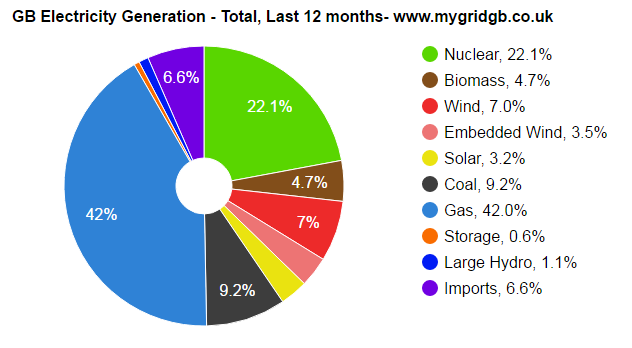The UK is committed to carbon reduction in all sectors of the economy be that electricity, heating, transport, agriculture or industry. The £1.3bn, 320MW tidal power station at Swansea Bay could be the next mega-project to help generate sustainable, local energy and assist with climate goals.
The question asked is how much it can reduce our carbon emissions per year. I believe that I can answer that using the same tools to run my Manifesto.

The UK is committed to carbon reduction in all sectors of the economy be that electricity, heating, transport, agriculture or industry. The £1.3bn, 320MW tidal power station at Swansea Bay could be the next mega-project to help generate sustainable, local energy and assist with climate goals.
The question asked is how much it can reduce our carbon emissions per year. I believe that I can answer that using the same tools to run my Manifesto.
—
Predicting the future is subjective and difficult. It is impossible to predict how much wind, solar, nuclear and biomass will be connected to our electricity system by the time Swansea Bay opens. Similarly, it is difficult to predict demand: how many electric cars will be online by then is a mystery to me! So to assess the impact on carbon emissions, I propose that we look at what would have happened if Swansea Bay was opened In January 2016 and at the same time all coal power stations had closed (as the Government plans to do by 2025).
The chart below shows our electricity mix over the last 12 months. My chart represents an 298 TWh of electricity generation in 2016 releasing 92 MT of CO2. This is a good chart for anyone in the gas industry as gas was the predominant source of our electricity in 2016.
Gas dominates our electricity system as well as our domestic heating market. Gas is King in Great Britain and we are addicted to it.

Swansea Bay is projected to produce 530 GWh of energy a year. In our 2016 scenario with no coal, that means 530 GWh less gas generated electricity. CCGT emit a median of 490 gCO2/kWh according to the IPCC, so the station alone will reduce carbon emissions by 0.25MT or 0.27% of what was released in our 2016 scenario (assuming our tidal plant has the same embedded carbon emissions as a hydroelectric plant at 24gCO2/kWh).
That isn’t much on its own. However, let’s not forget that Swansea Bay is part of a fleet of proposed stations around the country at a decreasing strike price.
| Tidal Power station | Capacity, MW | Energy per year, TWh |
| Swansea | 320 | 0.53 |
| Cardiff | 3000 | 5.5 |
| Newport | 1699 | 2.5 |
Solar and wind power have seen prices plummet and both are now seeing grid parity. If the Government is strong and continues to support the industry with clever price signals, then the same should be expected from tidal arrays. Should the Cardiff and Newport be added to Swansea, by extracting the above maths we find that three tidal arrays to reduce GB carbon emissions by 4.3% and our gas consumption for electricity by 5.6%.
Swansea Bay could be the start of a revolutionary reliable and new (for Great Britain) source of power which develops local jobs and local skills. If this project is successful economically and environmentally it could easily develop and an exportable industry and a larger fleet of tidal arrays around the country. In that case, Swansea Bay could be remembered one of the best investments made by a 21st Century British Government. Let’s hope they succeed on economic and environmental grounds!
You can read more on my thoughts on Tidal Power in the next issue of New Power magazine.
